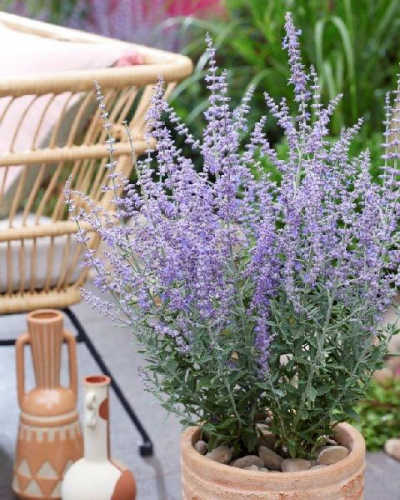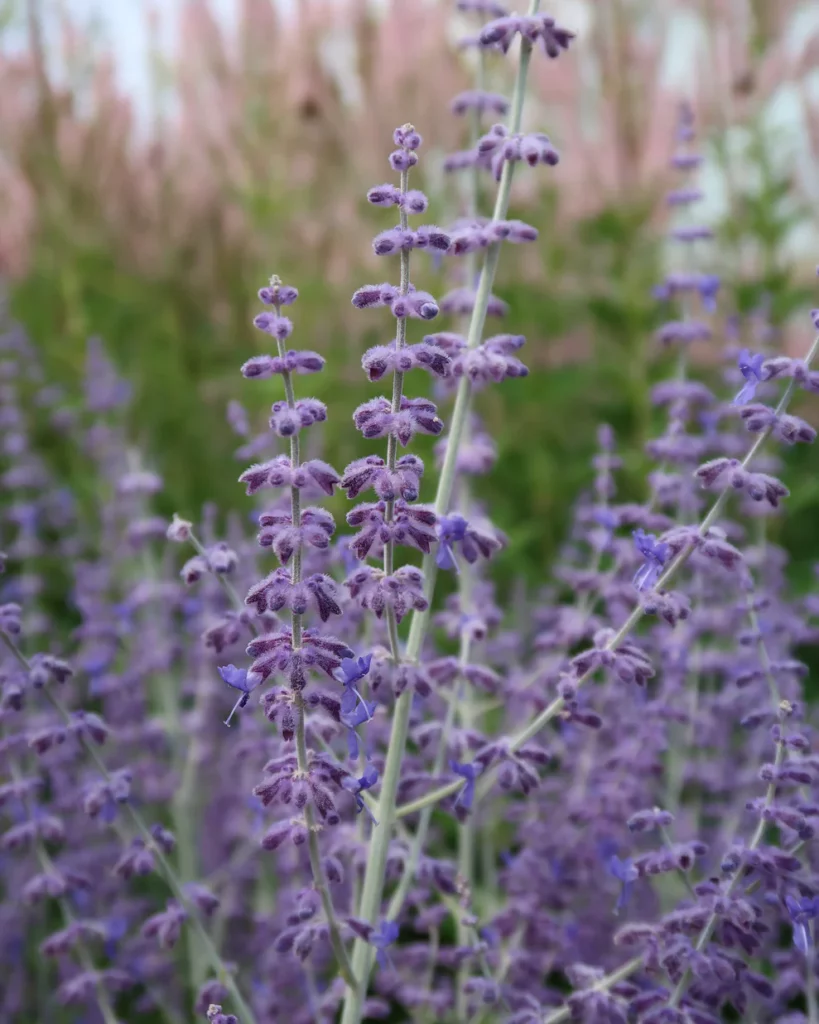Your cart is currently empty!
Category: Perovskia

Perovskia
History of the Perovskia plant
Perovskia (Perovskia) is an ornamental plant native to Central Asia, known for its beauty and unpretentiousness. It belongs to the Lamiaceae family (Lamiaceae) and is a relative of sage. The plant is named after the Russian general Vasily Perovsky (1795–1857), who was known for his role in spreading botanical knowledge and developing the territories of Central Asia, where this plant is often found in the wild.
Origin
Perovskia grows in regions with harsh climatic conditions, such as:
- Mountains of the Himalayas, Tien Shan
- Semi-desert areas of Afghanistan, Pakistan and Iran
- Dry steppes and rocky plains of Central Asia
Due to its resistance to drought and poor soils, the plant quickly became popular in different parts of the world as an ornamental crop.
Popularization in Europe
Perovskia was brought to Europe in the 19th century, where it was immediately loved by gardeners for its unusual silvery-green leaves and bright lavender-purple inflorescences. It began to be actively grown in botanical gardens and used for landscaping parks.
It has become especially popular Perovskia atriplicifolia, also known as "Russian sage", it fits perfectly into European gardens due to its ability to survive drought and high temperatures while maintaining an ornamental appearance.
Role in culture and horticulture
Today, Perovskia is considered a symbol of durability and elegance. It is used:
- In natural and Mediterranean gardens
- As a border plant
- To attract bees, butterflies and other pollinators
Perovskia not only decorates the landscape, but also emphasizes the natural beauty of nature. Its resilience and ability to bloom even in harsh conditions have made the plant a favorite choice of gardeners around the world.

Perovskia atriplicifolia 'Little Spire' – This is a compact variety of Perovskia, distinguished by its graceful silvery-green leaves and abundant flowering in lavender-blue tones.
Variety 'Little Spire' was bred as a more compact alternative to the standard Perovskia orachia. It retains all the decorative qualities of the original species, but is shorter (50–60 cm) and resistant to lodging.
Description of the variety 'Little Spire'
- Height: 50-60 cm
- Width: 40–50 cm
- Foliage: lacy, grey-green, fragrant
- Bloom: from July to September
- Flowers: small, lavender-blue, collected in paniculate inflorescences
- Aroma: light spicy, reminiscent of sage
- Winter hardiness: up to -30°C (zone 4-9)
- Attracts: bees, butterflies
Planting and care
Selecting a location
Perovskia prefers sunny, dry places, grows well in dry conditions. The soil should be light, well-drained, sandy or sandy loam.
Planting
- Plant in spring or fall
- Prepare a hole 30-40 cm deep
- Add sand or gravel for drainage.
- Plant the seedling, leaving the root collar at soil level.
- Water but avoid overwatering.
Watering and fertilizing
- After rooting, the plant requires virtually no watering.
- During dry periods, you can water once every 2 weeks.
- Fertilizing is not necessary, but in spring you can add a little compost or mineral fertilizer for flowering plants.
Trimming
- In spring, cut the stems back to a height of 10–15 cm to stimulate new growth.
- In autumn, you can slightly shorten the plant, but do not cut it to the ground.
Wintering
- In regions with harsh winters, you can mulch the base of the plant with leaves or spruce branches.
Use in landscape
- Looks great in mixed borders, combined with echinacea, lavender, sage
- Ideal for rockeries and dry flower beds
- Grows well in containers
'Little Spire' – a wonderful variety for a sunny garden, which does not require special care and pleases with its flowering until autumn.

